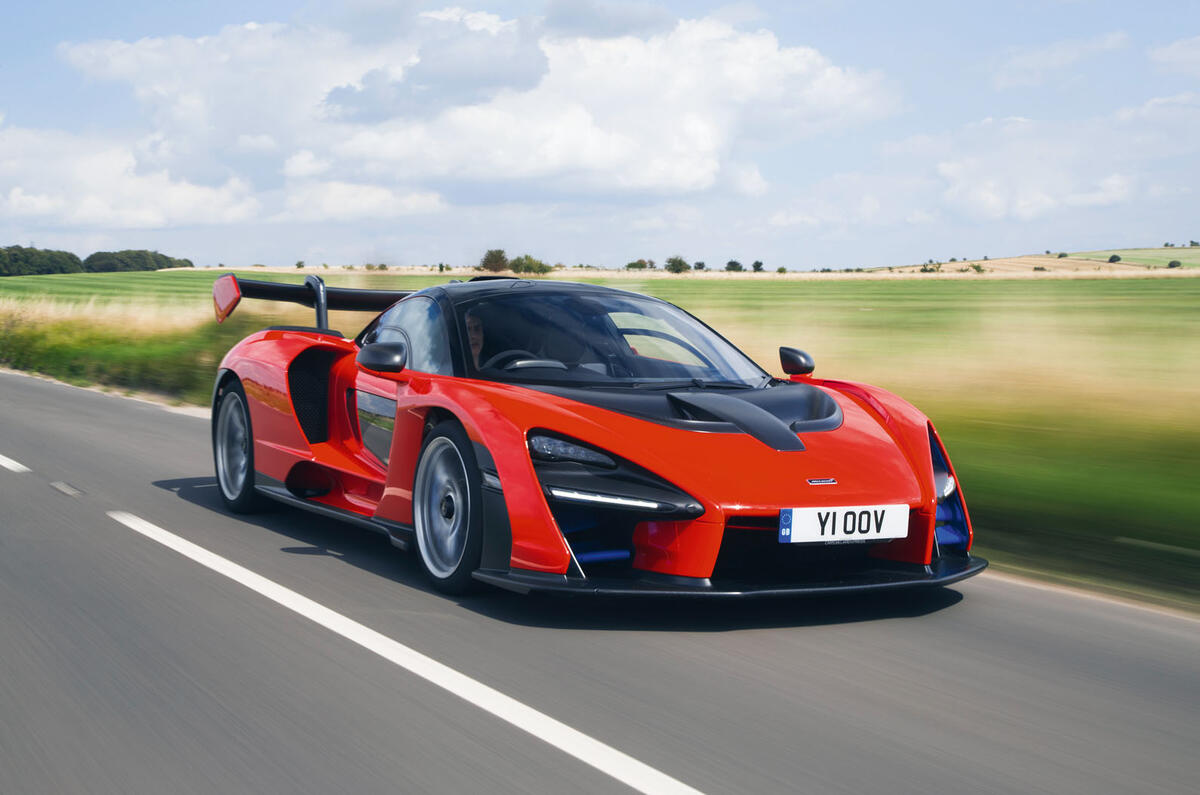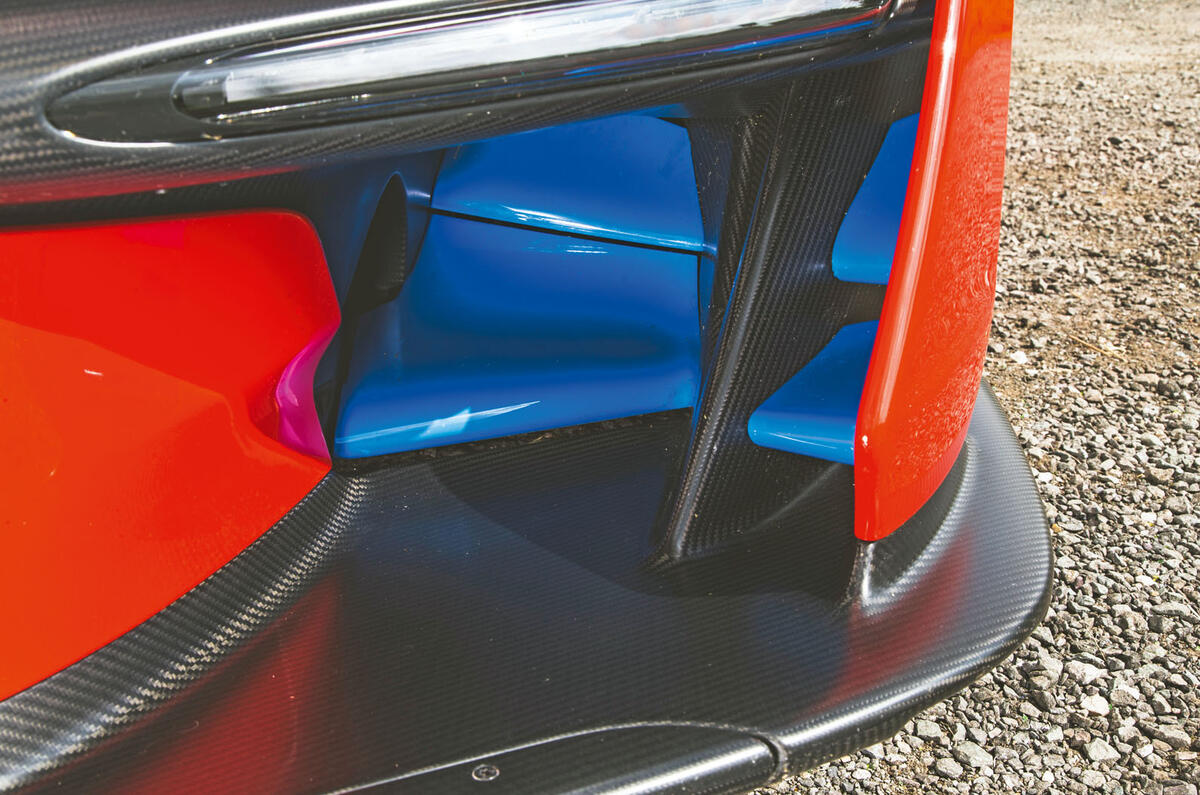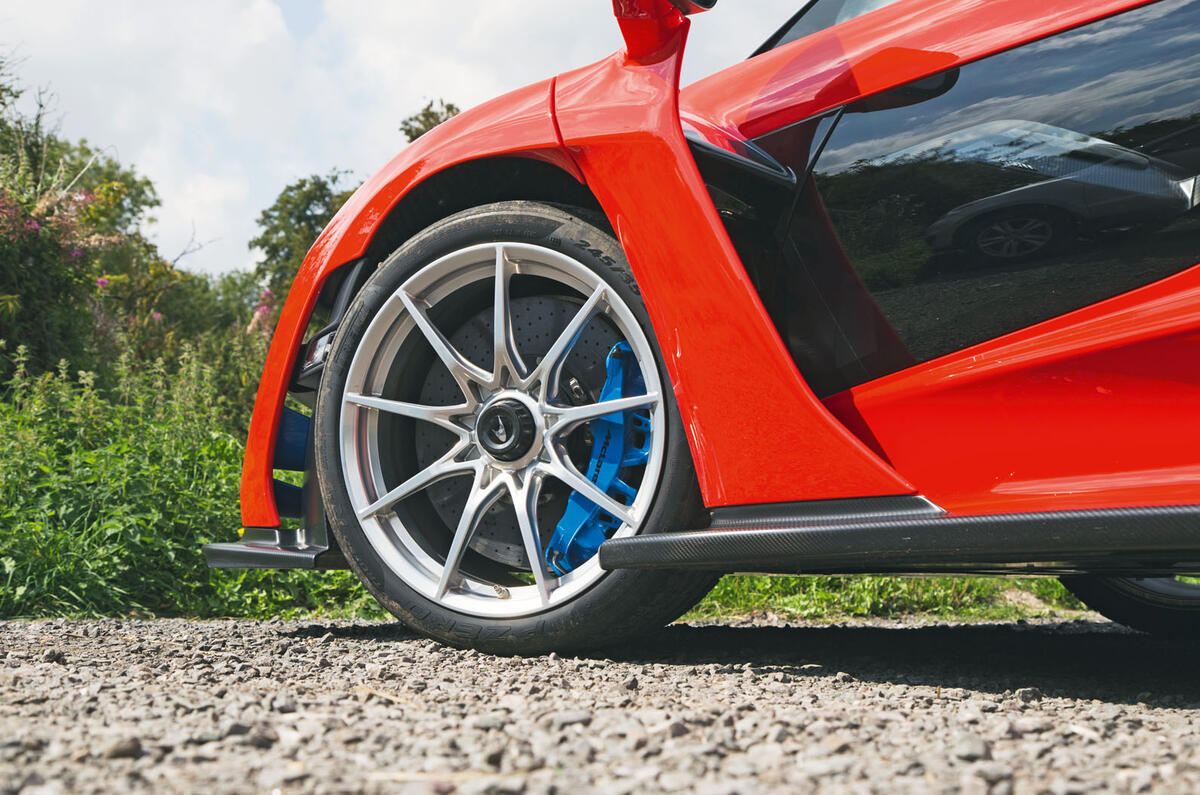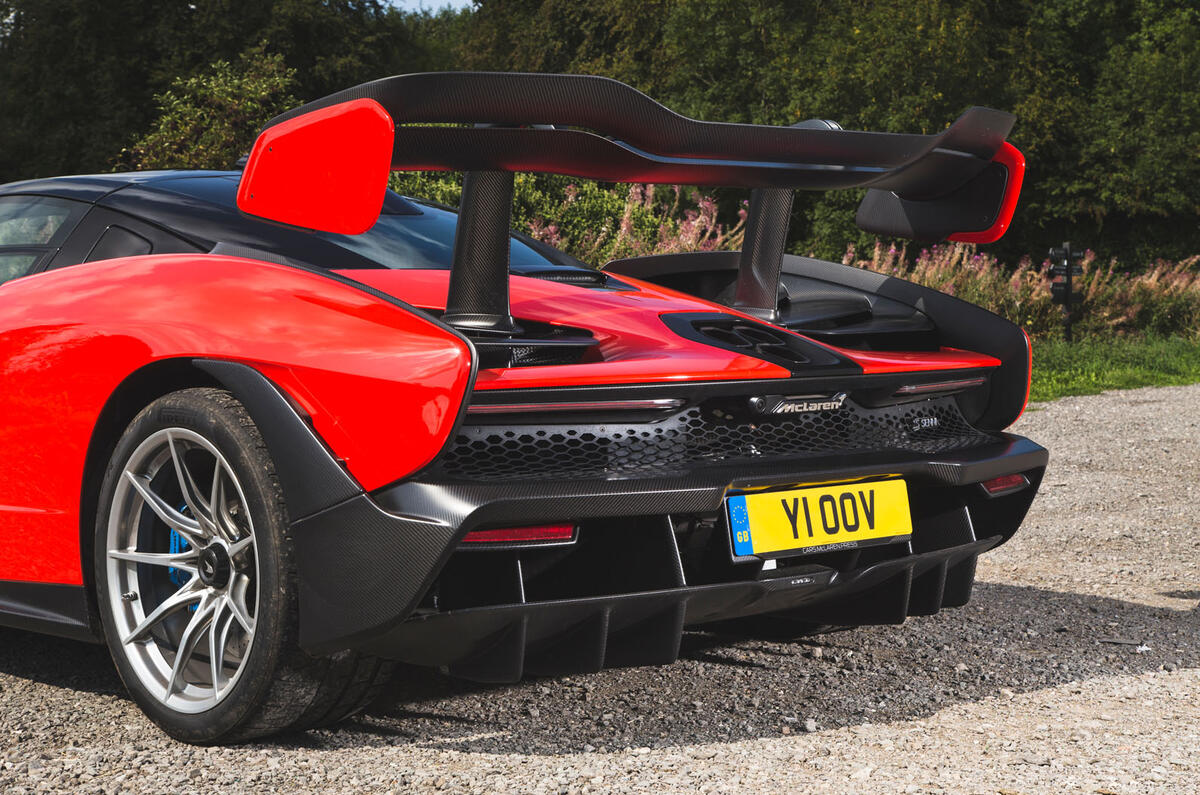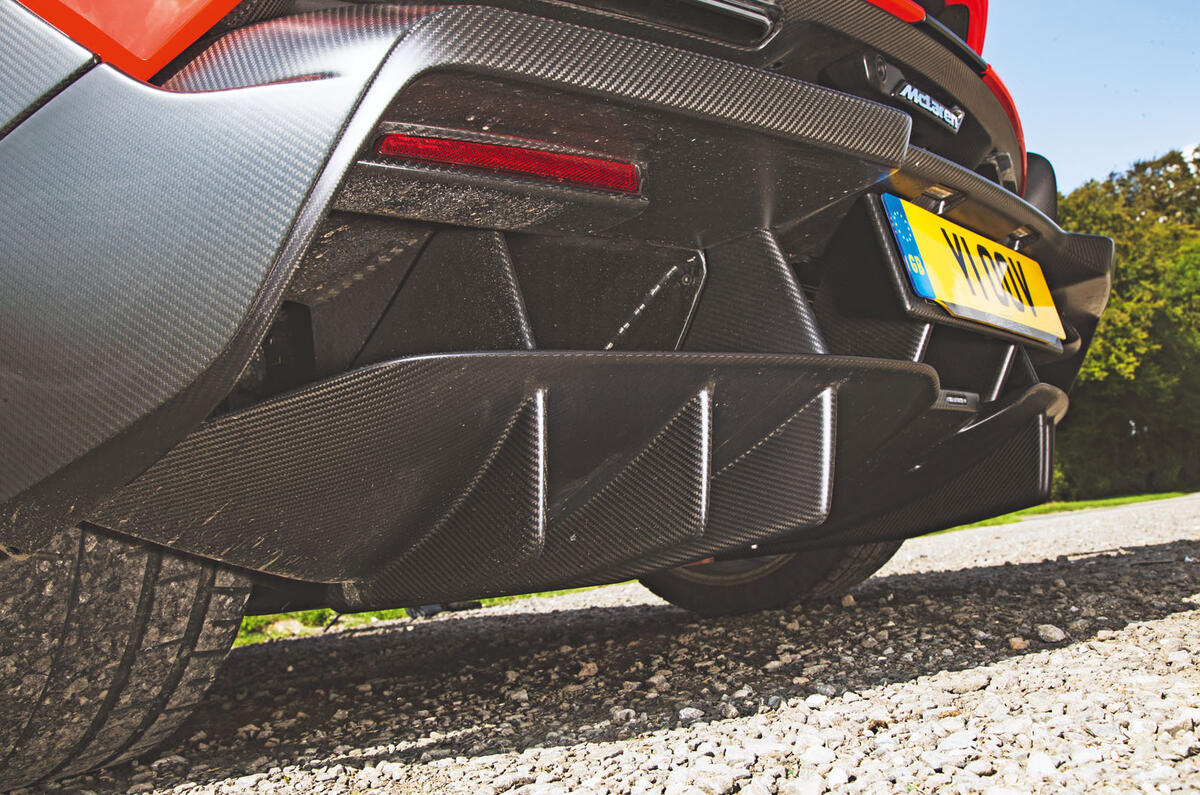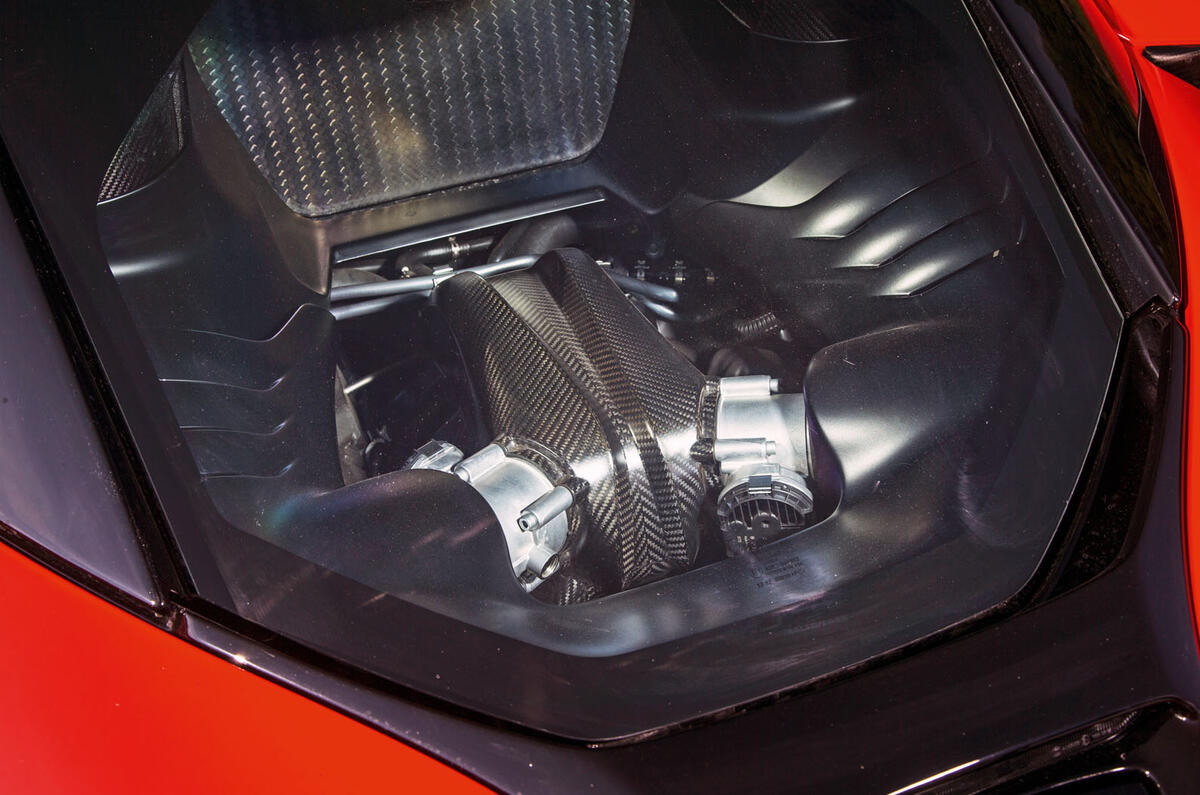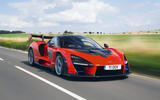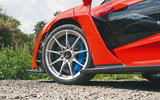As every new detail and statistic leads you to discover, bit by bit, the sheer purposefulness of the Senna’s design, you gradually realise that this isn’t just another hypercar. It’s plainly not a natural P1 successor, either, even though it might be priced like one.
The remarkable, almost Brutalist rawness of the car’s appearance hits you like a sharpened jab in the eye. The Senna clearly isn’t a car that seeks the approval of admiring glances. Its design is, by McLaren’s own admission, the purest expression of a ‘form follows function’ approach that it has created.
Every winglet, surface, curve and cleft is there not for what it looks like but for what it contributes. And once our testers had seen those features first hand and sampled what they work towards from the driver’s seat, most of them found it impossible to maintain any initial disappointment that the Senna isn’t better looking.
While we’re on the subject, those features combine to contribute a barely believable 800kg of downforce for the Senna at 155mph. This is a figure so far in advance of that of any other road-legal performance car as to be almost beyond comparison. A Lamborghini Huracán Performante develops 350kg of the stuff, but needs to be travelling at 186mph to make it; a Porsche 911 GT3 RS 500kg at just beyond 190mph.



